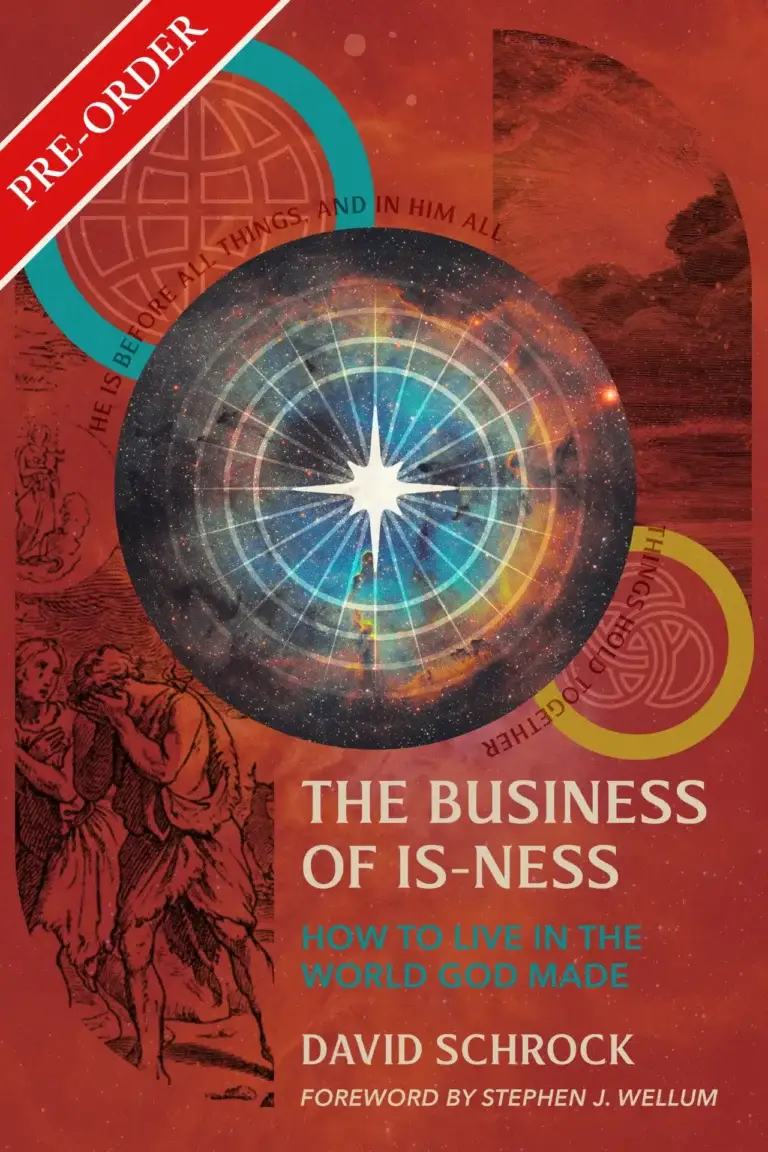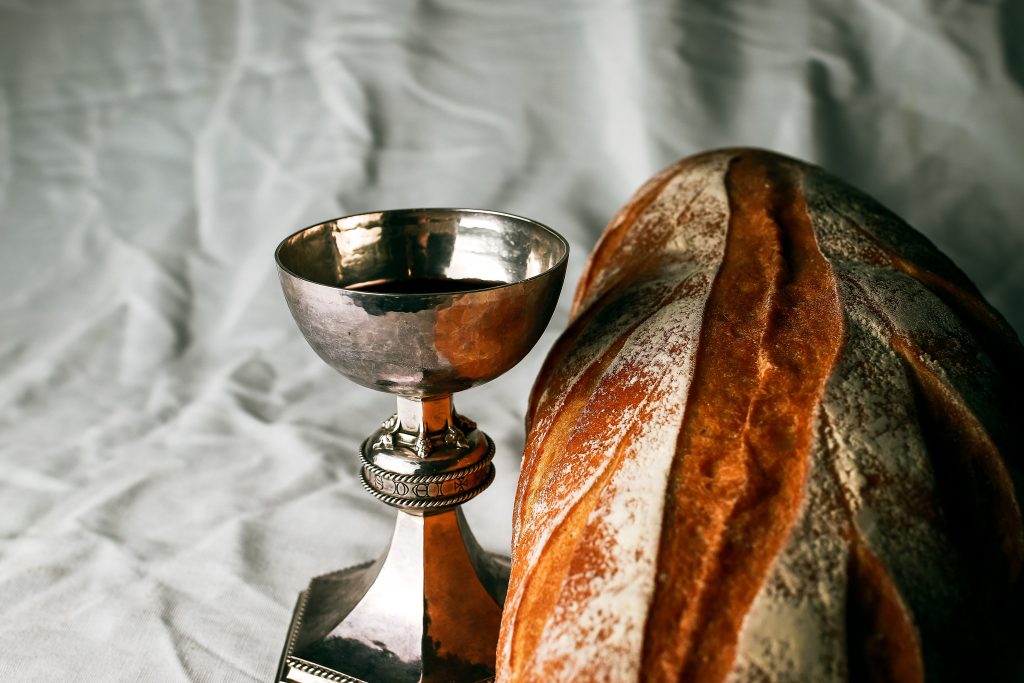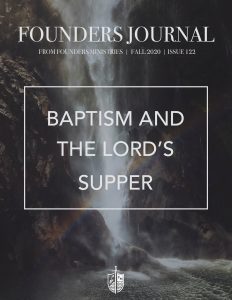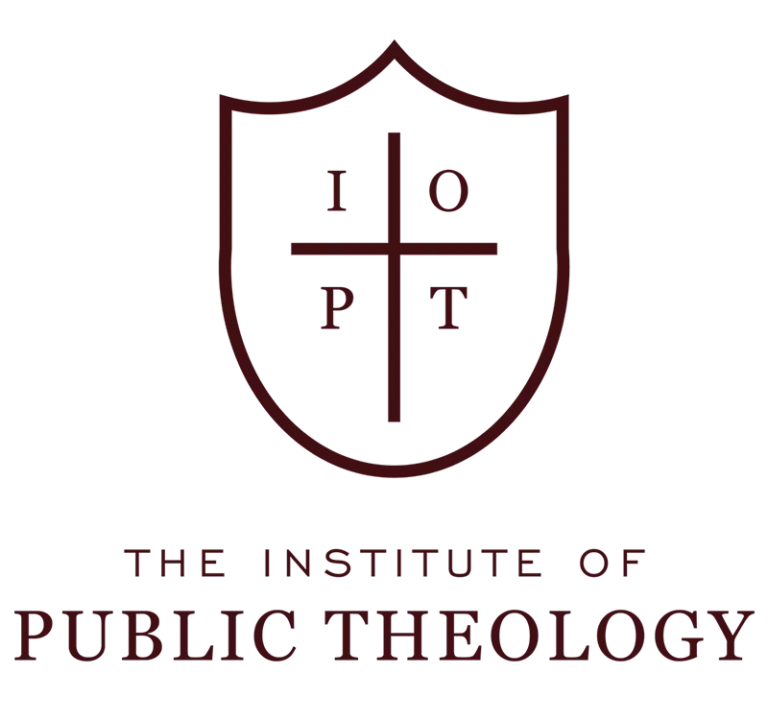Articles 28-30: Second London Confession
Jesus Reminds Us
Under the authority of Christ, the church practices two ordinances, baptism and the Lord’s Supper. Chapter 28 of the 2LC says that these two are of “positive, and sovereign institution; appointed by the Lord Jesus the only Law-giver, to be continued in his church to the end of the world.” They are to be administered by those called and qualified by Christ. Both of these are proclamations of the chief aspects of the covenant of redemption in accordance with which Christ was crucified (Romans 6:3; Matthew 26:28; 1 Corinthians 11:25). In his baptism, Jesus foretold that his obedience to the Father would lead him to a bloody death. In the Lord’s Supper, Jesus established a remembrance of his abused body and bleeding wounds just prior to their infliction.
The ordinances of baptism and the Lord’s Supper manifest the Trinitarian character of the covenant community, the church, and the specific trinitarian rhythm that should always be present in the witness of corporate worship. As does the entire revelation of the New Testament, these ordinances set forth a vigorous Christocentric trinitarianism.
These ordinances do not highlight themselves as sources of salvation but point to the historical work of Christ when he bore our sins in his own body on the tree. They are solemn and serious proclamations of the central facts of the gospel always to be enacted in the context of explanation and proclamation. Their power is not primarily existential, but they draw attention to the finality of the historical redemptive event. In doing so, they remind us that all spiritual blessings flow to us from the consummated ransom of Calvary.
The ordinances teach us submission to the governing authority of the revealed word of God. Participation in them calls for a mental and spiritual embracing of their truth. Each directly affirms the worship of God in Spirit and in truth. Only the Spirit qualifies a person to receive them; and only by the word of God does the Spirit change our minds and fit our hearts to bear in our bodies their reality. By the word of God, we learn the truth, and by the Spirit of God we confess the truth that Jesus is Lord and receive the mercies resident in his resurrection from the dead (1 Corinthians 12:3; 1 John 4:2; 5:1;1 Peter 1:22-25; Romans 10:8-13). The article on baptism states, “Those who do actually profess repentance towards God, faith in, and obedience to our Lord Jesus, are the only proper subjects of this ordinance.” Likewise in the Supper of the Lord, (30: 1) it is given to believers “to be observed in the churches unto the end of the world, for the perpetual remembrance, and showing forth the sacrifice in his death confirmation of the faith of believers in all the benefits thereof, their spiritual nourishment and growth in him, their further engagement in, and to, all duties which they owe unto him; and to be a bond and pledge of their communion with him, and with each other.”
There is no room for guess-work in interpreting these symbols. Though they are symbols, they are clearly interpreted symbols. Though they are short dramas, they have a prescribed meaning. God certainly is not opposed to the expressive power of symbol and drama and has designated these two enactments of the victorious passion of Christ as the church’s play.
Every vital aspect of plot, character, conflict, resolution, and denouement makes deep impressions on the entire participating community as the church regularly enacts the drama of redemption. We see man as fallen and under the curse of death with nothing he can do to release himself from its verdict. He is under the threat of eternal death, and moreover is oblivious to the roiling waters of divine vengeance ready to surround him. He comes to himself; we sense the difficulty of an awakened conscience in futile efforts to reverse this just sentence, and we struggle with the helplessness of man. We learn that an eternal covenant has been arranged just fit for this situation, expressive of the eternal wisdom, immutable justice, and invincible love of God. As designated in this covenant, the only person who can possibly rescue these sinners appears. He accomplished the work necessary for salvation through unimaginable cost: a conflict with the unbelief of those he came to save, an extended contest with the arch-fiend, the devil, and, most wrenching, he places himself in the stead of those who should receive from the Father “indignation and wrath, tribulation and anguish” (Romans 2:8, 9), a cost that none but that one could pay. The covenant involves the shedding of blood, the beating of his body, an entombment behind a sealed rock. His hard work is rewarded by his Father, he rises from the dead with such abundance of approval that eternal spiritual blessings accrue to all those who trust his work, and his work alone, for their acceptance before God. They are given the promise of eternal life, hope in this life, a renewal of soul to love and reach for holiness, and a sense of final resolution through the kingly return of their suffering servant.
A solemn but lively presentation of each ordinance helps each participant and observer enter the perfection of these ultimately true dramas. They are the dominically warranted proclamations of the real story that do not call for speculation as to their meaning. Their meaning is repetitively pressed on the mind and heart of the community. Their repetition draws us, not to the drama itself or to the elements that bear the story, but to its once-for-all divine enactment historically “in his body on the tree” as interpreted authoritatively in the present day according to divine revelation. The article on the “Lord’s Supper” (30) specifically rejects the idea that it constitutes a “real sacrifice,” but is a “memorial;” it affirms that the people must be given both the bread and the wine, not have the wine withheld from them; it rejects as an unscriptural superstition and as idolatrous the doctrine of transubstantiation, which in addition is repugnant “even to common sense and reason.” Scripture sometimes calls the elements of bread and wine by the “things they represent,” the broken body of Christ and his shed blood.
These ordinances do not operate as mere appendages to corporate worship, stuck on or pressed in with clumsiness or without connection to the entire experience, but reflect the essence of body life. They are so vital in expressing the particular event that has given the church existence, that they must constitute, along with the appropriate concentration on the word, the substance of the church’s confessional witness in worship whenever they are celebrated. They embody the singularity and absoluteness of the truth, “There is one body and one Spirit—just as you were called to the one hope that belongs to your call—one Lord, one faith, one baptism, one God and Father of all, who is over all and through all and in all” (Ephesians 4:4-6).
Baptism
Jesus commanded his disciples immediately before his ascension, “As you go make disciples of all nations, baptizing them in the name of the Father and of the Son, and of the Holy Spirit” (Matthew 28: 19). The confession states, “The outward element to be used in this ordinance is water, wherein the party is to be baptized, in the name of the Father, and of the Son, and of the Holy Spirit.” It continues by affirming, “Immersion, or dipping of the person in water, is necessary to the due administration of this ordinance.” (29: 3, 4).
They Obeyed His Command According to his instructions: Exactly according to his word, we find the disciples at Pentecost responding, “So those who received his word were baptized” which consisted of “everyone whom the Lord our God calls to himself” (Acts 2:39, 41). We find the same order true in Samaria, “But when they believed Philip as he preached good news about the kingdom of God and the name of Jesus Christ, they were baptized, both men and women” (Acts 8:12). When the gospel came with power to the house of Cornelius through the preaching of Peter, in the presence of the “believers from among the circumcised,” Peter declared, “Can anyone withhold water for baptizing these people, who have received the Holy Spirit just as we have?” On that basis, therefore, “He commanded them to be baptized in the name of Jesus Christ” (Acts 10:47, 48). When the Philippian jailer heard the message, “Believe in the Lord Jesus, and you will be saved, you and your household,” he took Paul to his house where Paul and Silas “spoke the word of the Lord to him and to all who were in his house” (Acts 16:31, 32). The promise of salvation through faith was to him and to his household, so they too must hear the word in order to believe. They did and “he was baptized at once, he and all his family.” The last part of verse 34 should read, “And he rejoiced, all of his house having believed in God.” The whole household was instructed in the word, the whole household believed, and the whole household was baptized.
Baptism is Trinitarian. In the baptism of Jesus (Matthew 4:13-17), we see the clearly trinitarian arrangement of the ordinance. The Son of God is there, submitting to all righteousness; the voice of the Father is there proclaiming the belovedness and the eternal sonship of the Son; and the Holy Spirit is there descending as a dove showing that, in this mysterious incarnation, the Son of God himself must indeed fulfill all righteousness as a man who “through the eternal Spirit offered himself without blemish to God” (Hebrews 9:14).
Immediately after this initiatory event and the manifestation of the trinitarian nature of this mission, the continuing element of the Spirit’s involvement becomes clear. Jesus was “full of the Spirit” and was led, really driven, by the Spirit into the wilderness to be tempted of the devil. This began the tests in which Jesus fulfilled all righteousness that we might be justified and adopted.
For us, baptism reflects the work of the Spirit both in fitting us for union with Christ by regeneration and empowering us for “newness of life,” that is, sanctification. He unites us with the Lord Jesus in his perfect work of salvation, and testifies to our place as a member in the body of Christ, the church. “For just as the body is one and has many members, and all the members of the body, though many are one body, so it is with Christ. For in one Spirit we were all baptized into one body . . . and all were made to drink of one Spirit” (1 Corinthians 12:12, 13). This is one reason that baptism is so closely tied to church membership. All of the “members of the body” bear witness that they too were “made to drink of one Spirit,” that is, have been subject to the saving operations of the Spirit, and were placed by the Spirit, not only into the universal church composed of all the elect of all ages, but into this local congregation. There, by the gifting of the Spirit, we work “for the common good” (1 Corinthians 12:7).
Baptism also draws attention to the powerful operation of the Father in raising Christ from the dead –“having been buried with him in baptism, in which you were also raised with him through faith in the powerful working of God, who raised him from the dead” (Colossians 2:12). Again, Paul inserts the operation of the Father into the meaning of baptism in writing, “We were buried therefore with him by baptism into death, in order that, just as Christ was raised from the dead by the glory of the Father, we too might walk in newness of life” (Romans 6:4). Baptism signifies that Christ is the “firstborn among many brothers,” and as we have followed him in his death so we are released from “bondage to corruption and obtain the freedom of the glory of the children of God.” We are sons of God through faith in him and the Father has received us as his children.
When Paul explained the meaning of our baptism (“as many of you as were baptized into Christ”) as the expression of our having “put on Christ” (Galatians 3:27), he gave a pungent summary of the trinitarian foundation of salvation. Under the initiatory authority of the Father in the eternal covenant of grace, he sent the Son. By this work of redemption, the Father then sent the Spirit. “But when the fullness of time had come,” that is, the time established in eternity when the Father gave to the Son a people to save (John 17: 3, 4), “God sent forth his Son,” that is, at the precise moment that the “power of the Most High” (Luke 1:35) overshadowed Mary, “born of woman,” for in addition to the overshadowing of the Most High the Holy Spirit had come upon her so that child was both Son of God and son of Mary born of her flesh, “born under the law,” that is, truly born as a Jew under ceremonial law and as the Son of Man under the moral law, “to redeem those who were under the law,” because the law held us captive to its true moral demand of death to the transgressor, “so that we might receive adoption as sons” for when the legal barriers are removed by his suffering he “is not ashamed to call [us] his brothers” (Hebrews 2:12). “And because you are sons,” So Paul continued, “God” that is, God the Father according to the terms of the covenant and on the basis of the reconciling work of Christ, “has sent the Spirit of his Son into our hearts, crying, ‘Abba Father!’” This new familial status means “you are no longer a slave, but a son, and if a son, then an heir through God” (Galatians 4:4-7). All of this meaning is invested in the putting on of Christ in the public testimony of baptism. The triune God is on our side, for us in mercy. The entire congregation, before whom this is done, remembers, confesses, testifies to the same understanding, and worships.
Baptism points to a finished work. One’s baptism signifies that he is bearing witness to the finished work of Christ and has taken to himself all that is implied in having been bought with a price. He confesses, as it were, “I do know that my body is a temple of the Holy Spirit within me, whom I have from God. I am not my own, for I was bought with a price. So henceforth, this body that has been buried and has risen again with Christ will be put to the service of the glory of God” (1 Corinthians 6:19, 20). To “put on Christ,” therefore, as a voluntary act of obedience to the command of Christ is to reflect the work of Christ immediately, for when we are baptized we are “baptized into his death” (Romans 6:3). The confession affirms that to the baptized person, this ordinance is “a sign of his fellowship with him, in his death, and resurrection; of his being engrafted into him; of remission of sins; and of his giving up unto God through Jesus Christ, to live and walk in newness of Life.”
Christ’s death is the event that embodies all things that lead the sinner from death to eternal life. It sets in motion the powers brought to bear on the sinner to carry him from under the curse to the glorified state in heaven. From our being foreknown in Christ, to our being called, justified, sanctified, glorified, and appearing in his image before all the citizens of heaven, all flows in a never-ending stream from his death. “He who spared not his own Son, but delivered him up for us all, how shall he not also, along with him, freely give us all things” (Romans 8:32). Baptism symbolizes that, testifies for the person and the church that vital truth, presses the historical reality on the conscience, and leads the church, not to rely on the symbol, but to confess more deeply their dependence on the Savior in his once-for-all work (Hebrews 7:26-28).
Baptism denotes identification with Christ’s suffering. Though baptism does not activate God’s saving work but symbolizes its content, that does not mean that nothing existential is at stake at all when a person submits to the ordinance. When disciples asked about their place in his kingdom, Jesus pointed to the fact that only through a baptism in blood and the emulation of it in the life of the disciples would the kingdom be established. “Are you able to drink the cup that I drink, or to be baptized with the baptism with which I am baptized? . . . The baptism with which I am baptized, you will be baptized” (Mark 10:38, 39). Christ’s obedience to this baptism of ransom blood would seal and mature his unbroken course of righteousness to the Father’s will (Matthew 3:15 – “Thus it is fitting for us to fulfill all righteousness”). In this baptism, he announced that, because of this perfected righteousness (Hebrews 5: 8, 9), after a baptism in blood (Mark 10:38-45), he would be raised from the dead.
Those elements of redemptive truth, present when Jesus was baptized by John the Baptist, define for us what should be present both in our minds and in the accompanying words during the practice of this ordinance. By entering into John’s baptism, he affirmed John’s message about Jesus himself and also the reality of sin in the human family and the need for repentance. Though he was sinless, he took on himself the debt of sinners. As we are baptized in water as he was, so we are committed to take up the cross, follow him, and be willing to be baptized in blood as he was. Having been brought to faith, we testify publicly that Christ’s life, death, and life-again is ours. Again, to this Paul pointed when he wrote the Galatian churches, “for in Christ Jesus you are all sons of God, through faith. For as many of you as were baptized into Christ have put on Christ” (Galatians 3: 26, 27). In baptism, the person announces that he has counted “all things as loss because of the surpassing worth of knowing Christ Jesus my Lord and, in order that I may know the power of his resurrection, I now show my commitment to share in his sufferings and become like him in his death” (cf. Philippians 3:8, 10).
It is not a time for light banter or humorous observation but a time for being committed to the resurrection of the righteous through dying the death of the righteous. It denotes that Jesus, being set apart by the Father for such a death, also consecrated himself for this death, that those given to him by the Father would be forgiven of sin and be granted eternal life by His righteousness. Our voluntary submission to this ordinance, following upon personal repentance and faith, therefore, means that we have submitted to the biblical principle that the life dependent on his death comes “that those who live might no longer live for themselves but for him who for their sake died and was raised” (2 Corinthians 5:13). In his death, we died; in his resurrection, we live. Our true life, moreover, is but for a commitment of willingness to die in the cause of the Christ who bought us with his precious blood.
The Lord’s Supper (Paragraph 30)
The gospel writer Luke (22:19) recorded, “And he took the bread, and when he had given thanks, he broke it and gave to them saying, ‘This is my body, which is given for you. Do this in remembrance of me.’ And likewise the cup after they had eaten, saying, ‘This cup that is poured out for you is the new covenant in my blood.’” We find that the first church “devoted themselves to the apostles’ teaching and fellowship, to the breaking of bread and to prayers” (Acts 2: 42). This ordinance was to be practiced by the whole church as a matter of deep solemnity and in demonstration of gospel unity. This ordinance was given by Christ for a “perpetual remembrance, and shewing forth the sacrifice of his death, confirmation of the faith of believers in all the benefits thereof.” Worshipful engagement in the Supper would provide “spiritual nourishment and growth in him,” and serve to remind them of the covenantal bond given them in Christ and likewise the spiritual communion of believers with each other (1).
The Manner and Mental Attitude in Partaking is Important: To reinforce that fact, Paul gave a sober warning to the Corinthian church about her attitude and conduct in the time of corporate worship when partaking of the memorial meal: “For as often as you eat this bread and drink the cup, you proclaim the Lord’s death until he comes. Whoever, therefore, eats the bread or drinks the cup of the Lord in an unworthy manner will be guilty of profaning the body and blood of the Lord. Let a person examine himself, then, and so eat of the bread and drink of the cup. For anyone who eats and drinks without discerning the body eats and drinks judgment on himself” (1 Corinthians 11:26-29). Solemn warning, indeed, and intended to discourage any reception of the Supper not permeated with both Spirit and truth.
The confession, therefore, warns that “all ignorant and ungodly persons, as they ae unfit to enjoy communion with Christ; so are they unworthy of the Lord’s Table.” The descriptive words, “ignorant and ungodly,” refers to those who are unconverted. They do not have a saving knowledge of Christ and thus are devoid of the Spirit of God and any affection for godly living. Consistently in the life of the established church these Baptists had seen the constant participation in communion of merely nominal Christians, baptized in infancy and required to commune. This practice drove unconverted persons into “great sin against him” while they remained unconverted. As such, they received the elements of bread and wine “unworthily and are guilty of the body and blood of the Lord” (8).
As an established perpetual element of corporate worship, the memorial should be approached with understanding. There must be no extortion of the heart in exalting the material of the Supper beyond biblical warrant. At the same time, it must not be demoted from its ordained place to effect sanctifying meditation on the redemptive work of the cross.
Symbols in Perpetuity – In the text in Matthew 26:26-29, Jesus used the words “Take, eat; this is my body.” Also with the cup he said, “Drink of it, all of you, for this is my blood of the covenant, which is poured out for many for the forgiveness of sins.” Some traditions receive these words as indicating that there is a perfect identity between the elements partaken and the body and blood of Christ. Roman Catholic theology asserts that transubstantiation takes place. The elements, maintaining all the appearance, feel, and taste of bread or wine actually become the real flesh of Christ and the true blood of Christ. This miracle of “transubstantiation” occurs at the use of the appropriate form by the priest and those partaking receive grace ex opera operato, that is, in the very act of taking, unless the recipient has committed mortal sin. Lutheran liturgy upholds a doctrine of “real presence” but not transubstantiation. Because of Christ’s omnipresence, and through the words spoken, Christ’s body and blood, united in one person with his deity, actually are present in the elements of the Supper, so they believe.
Although Zwingi and Calvin differed in some matters of expression, they agreed in this, “Hence, any man is deceived who thinks anything more is conferred upon him through the sacraments than what is offered by God’s Word and received by him in true faith.”[2] Zwingli wrote of eating both spiritually and sacramentally. To eat spiritually was to receive the work of Christ by faith in that God has promised forgiveness through the death and resurrection of his Son to those who receive that work as the only means by which sinners can be reconciled. To eat sacramentally occurs when “you join with your brethren in partaking of the bread and wine which are the tokens of the body of Christ. . . . You do inwardly that which you represent outwardly.” [3]
As an expression of disgust, some have characterized the Zwinglian view as that of “bare symbol.” If one means by bare, that no importance for spiritual growth and deepened worship of Christ is intended by it, then the word “bare” is a complete caricature. If one means that the elements add nothing to the reconciling transaction that was accomplished in time and space in the body of Christ on the cross, then the word “bare” is a truly evangelical affirmation. The bread and wine are symbols, naked and unadorned, and do nothing but point, but point with sober poignancy, to the place where all was done.
The biblical narrative supports the idea that this is the use of a symbol by Jesus. Jesus often used the verb of being to speak of a symbol that depicted some aspect of his redemptive work. “I am the door of the sheep” (John 10:7). John, in fact, called this manner of teaching a “figure of speech” or a “similitude” (10:6) “I am the true vine” (John 15:1). At Passover, Jews would say, “This is the bread of affliction,” meaning it symbolizes the affliction they had endured in Egypt. Jesus’ words, therefore, recalled this emblematic power already present in the Passover meal.
The historical reality is that Jesus stood before them and had not yet had his body broken nor his blood shed. He called the wine (“this is”) the “blood of the covenant which is poured out for many for the forgiveness of sins.” That blood had not yet been shed, for, in accord with the covenant, it would be shed, poured out, but once to accomplish forgiveness. The book of Hebrews gives clarity that the reality of that historical event cannot be duplicated; in fact, it need not be duplicated for in completing the covenantal provisions it was sufficient once and for all (Hebrews 7:27; 9:12, 15, 24-28; 10:9, 10, 14, 18; 13:20, 21).
The symbols are to remind us of the perfect satisfaction provided by Christ in his once-for-all death on the cross. They do not draw attention to themselves as having any efficacy, but to the single event in which reconciliation occurred. He poured out his blood for many and in that death he brought to justification the many for whom he died: “By his knowledge my righteous servant shall justify many, for he shall bear their iniquities . . . He poured out his soul unto death . . . He bore the sin of many, and made intercession for the transgressors” (Isaiah 53:11,12).
If the disciples partook of his actual body, as yet unbroken and unbruised, did they partake of his mortal, unresurrected, unglorified body, or did they partake of the body that did not yet exist? Do we partake of the same body that they did, if in fact we take his literal body? Do we partake of the body as it was before his resurrection or after his resurrection? Or does Christ still have both a mortal body capable of death and a glorified body incapable of death? Or is this more likely symbolic language that draws our adoration to the great redemptive transaction on Calvary? For that purpose, he took on a body that he might die in our nature to give eternal life to our nature: “Sacrifices and offerings you have not desired, but a body you have prepared for me; . . . I have come to do your will, O God. . . . And by that will we have been sanctified through the offering of the body of Jesus Christ once for all” (Hebrews 10:5-10). The body that was offered once satisfied forever for the forgiveness of sins and the sanctification of the believer. That body was glorified in the resurrection, and never will be offered again.
Salvation comes not through any kind of intrinsic efficacy in the material elements of bread and wine themselves; rather it resides in the satisfaction of divine wrath justly manifested in time and space on one of our race who could lawfully, ontologically, and morally stand in as our substitute. Jesus was morally qualified to suffer vicariously for he had no transgression of the law as his own for which he must die. He was truly man and stood as our covenant head. He had a human body, a human mind, a human spirit all of which must endure fully the divine wrath due his people. This he did during his hours on the cross and finished the suffering. The confession insisted, “In this ordinance Christ is not offered up to his Father, nor any real sacrifice made at all, for remission of sin for the quick or dead; but only a memorial of that one offering up of himself, by himself, upon the cross, once for all” (2). No more will his blood be shed nor his body broken. His life was poured out with his blood on the cross and there is no occasion in which the blood of the covenant must be poured out again.
To the internalization by faith of this historic work the Lord’s Supper calls us. The Confession says, “Worthy receivers, outwardly partaking of the visible elements in this ordinance, do then also inwardly by faith, really and indeed, yet not carnally, and corporally, but spiritually receive, and feed upon Christ crucified & all the benefits of his death.” This does not mean that his body has spiritual presence in and of itself; that would be contradictory to the nature of the body. “Behold my hands and my feet, that it I myself. Handle me and see, for a spirit does not have flesh and bones as you see I have” (Luke 24: 39). It means that we contemplate with our whole mind and affections the claim that such a death has on us and that we long for the continued transforming power of the gospel in our lives. The confession confirms this in continuing “The body and blood of Christ, being then not corporally, or carnally, but spiritually present to the faith of Believers, in that ordinance, as the elements themselves are to their outward senses” (30: 7). By faith in the completed work of Christ, the emblematic presentation of that once-for-all substitution for our sake, gives spiritual conviction and energy to the believer. By Jesus’ omnipresence and by his perpetual intercession, the believer has a heightened sense at the time of the Supper that “we have an advocate before the Father, Jesus Christ the righteous one” (1 John 2:1).
It is a memorial. It is a “perpetual remembrance and shewing forth the sacrifice in his death” (30: 1).The passages in Luke 22 and in 1 Corinthians 11 point to the reality that, in partaking of the Lord’s Supper, we remember what he did. Luke 22:19 recorded the words, “Do this in remembrance of me” after the giving of the bread. In 1 Corinthians 11:23-26, Paul gives a straightforward presentation in which he records Jesus using the words of remembrance after both the bread and the wine. After breaking the bread, Jesus said, “This is my body which is for you. Do this in remembrance of me.” When he took the cup he said, “This cup is the new covenant in my blood. Do this, as often as you drink it, in remembrance of me.”
As they were taking the Passover, Jesus gave a simplified partaking of elements. The Passover had been predictive and prospective. Their partaking of the lamb was to serve as a promise of redemption. The yearly celebration reminded them of the promise, that God would provide a lamb in the future who would take away the sins, not of the Jews only, but of the world. As Jesus instituted the Lord’s Supper, he presented it as a memorial. Its future celebrations would look to that which already was accomplished and was retrospective of the past work of Christ. This symbolic drama was to be surveyed by the heart in calling to mind the greatness of the sacrifice. Each recipient can say with Isaac Watts, “When I survey the wondrous cross on which the Prince of Glory died, my richest gain I count but loss, and pour contempt on all my pride.”
The element of the prospective was reinserted as we now look to the coming-again of the Lord in his glorified body. As the supper points to faith in that which has been done in his body, so it points to hope in that which will be done in our body: “But our citizenship is in heaven, and from it we await a Savior, the Lord Jesus Christ, who will transform our lowly body to be like his glorious body, by the power that enables him even to subject all things to himself” (Philippians 3:20, 21). “Christ, having been offered once to bear the sins of many, will appear a second time, not to deal with sin but to save those who are eagerly waiting for him” (Hebrews 9:28).
We do not look to the elements of which we partake at that moment as having redemptive significance in themselves, but only as they point us to the historic, time-space sacrifice of Christ. The symbols call us to look to Christ himself, presently interceding for us on the basis of the blood he shed at Calvary. In remembering, the participants actively press their minds to recall the biblical presentation of the historic event of redemption. This memorial presents an objective assurance that, once for all, Christ endured the portion of wrath due to them, so that “in him we have redemption through his blood, the forgiveness of sin” (Ephesians 1:7).
This event in the worship of the church is a time of proclamation of the gospel, for “we proclaim the Lord’s death until he comes.” It is a time of preaching the gospel to our own souls for we partake of bread and wine in active remembrance of Jesus as the only redeemer. We do this in a sense of worship, with reverence, and repentant humility for this must be taken in a worthy manner lest we betray a heart that yet has not felt the gravity of Christ’s sacrifice and we remain, not redeemed, but “guilty concerning the body and blood of the Lord.” It is, therefore, a time of sober examination, calling for deep discernment of the reason that Christ was given a body, a necessary sufferer in our stead. It is not a time for the careless or curious, the one merely fascinated by the quaintness of the process, but for the body of believers to “come together” to worship the one who underwent judgment for us.
[1] Parts of this article come from a chapter in an upcoming book published by Founders Press entitled Praise is His Gracious Choice.
[2] John Calvin, Institutes of the Christian Religion, ed. John T. McNeill, trans. Ford Lewis Battles, 2 vols (Louisville: Westminster John Knox Press, 1960, 2006) 2:1290.
[3] Huldreich Zwingli, “An Exposition of the Faith,” in Zwingli and Bullinger, trans. G. W. Bromiley (Philadelphia: The Westminster Press, 1953), 259.






























